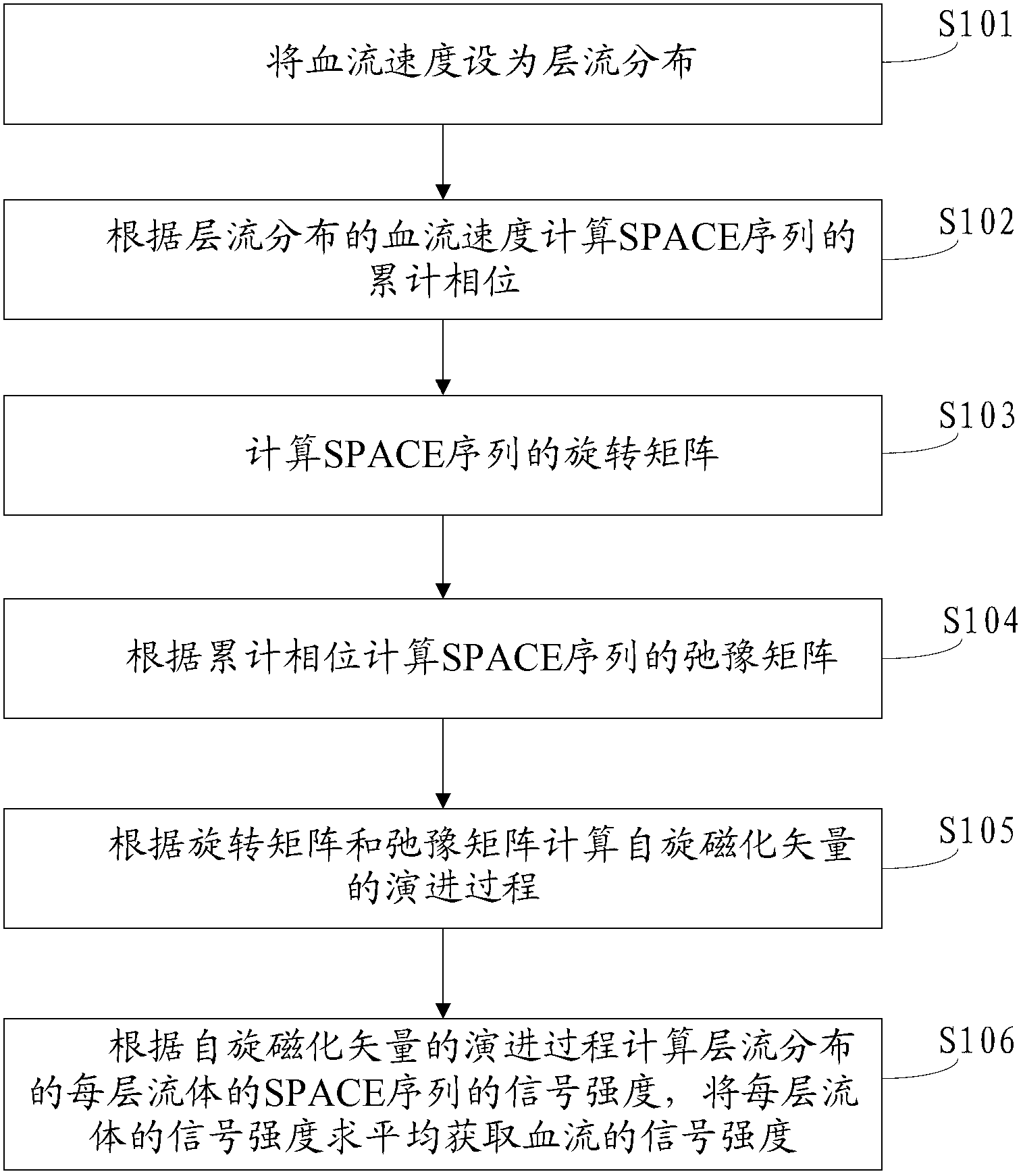Method and system for calculating sampling perfection with application-optimized contrasts by using different flip angle evolutions (SPACE) sequence signal and method for acquiring aorta signal
A technology of sequence signals and calculation methods, applied in the fields of measurement using nuclear magnetic resonance image system, magnetic resonance measurement, medical science, etc.
- Summary
- Abstract
- Description
- Claims
- Application Information
AI Technical Summary
Problems solved by technology
Method used
Image
Examples
Embodiment Construction
[0026] The sampling rate of TSE (turbo spin echo, fast spin echo) technology has been improved compared with ordinary spin echo technology, but when it is applied to three-dimensional imaging, its scanning time may still be as long as tens of minutes. unacceptable. The limitation of TSE acquisition efficiency mainly lies in: 1. The echo chain cannot be too long. 2. The radio frequency energy absorption rate is very high, especially in high field, such as 3T system. In 2004, researchers at the University of Virginia in the United States first realized the SPACE three-dimensional fast spin echo imaging technology on the Siemens system, and successfully solved the problem left by TSE by using a variable flip angle design in the refocusing pulse.
[0027] In one embodiment, such as figure 1 As shown, a calculation method of a SPACE sequence signal, which is used to calculate the aortic blood flow signal, comprises the following steps:
[0028] S101: Set the blood flow velocity ...
PUM
 Login to View More
Login to View More Abstract
Description
Claims
Application Information
 Login to View More
Login to View More - R&D
- Intellectual Property
- Life Sciences
- Materials
- Tech Scout
- Unparalleled Data Quality
- Higher Quality Content
- 60% Fewer Hallucinations
Browse by: Latest US Patents, China's latest patents, Technical Efficacy Thesaurus, Application Domain, Technology Topic, Popular Technical Reports.
© 2025 PatSnap. All rights reserved.Legal|Privacy policy|Modern Slavery Act Transparency Statement|Sitemap|About US| Contact US: help@patsnap.com



